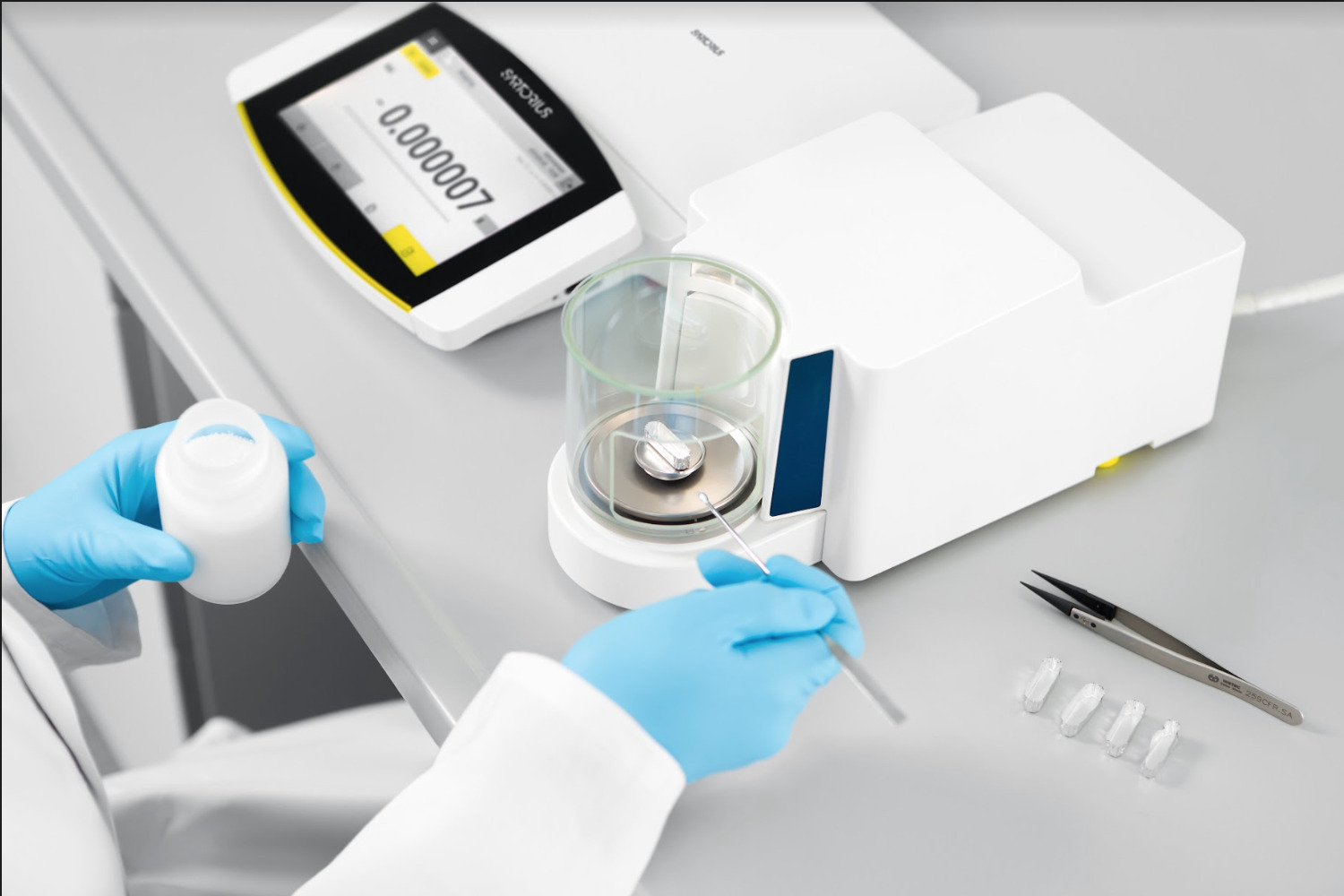
Today’s blog contains information about the minimum weight for USP 41 compliance with your lab’s scales and balances!
Each balance has at least one weighing range from about 0 to the maximum load max with a scale interval d. Every measured value is subject to measurement uncertainty, regardless of where it was taken in the weighing range. The measurement uncertainty is a parameter for identifying a value range within which the actual value of the measured variable lies. This uncertainty contribution is usually composed of two parts, a constant part independent of the measured value and a part increasing with the size of whichever measured variable. When roughly considered, the measurement uncertainty contribution, however, is around the order of magnitude of the display resolution or the scale of the interval d. Read on to learn more about the minimum weight for USP 41 compliance with your lab’s scales and balances!
Minimum Sample Weight in Accordance with USP 41
The USP places strict requirements on balances used for precise weighing to reduce faulty analyses in pharmaceutical processes to an acceptable and negligible level. These conditions are binding and outlined in USP 41 on laboratory balances.
- Balances have to be calibrated throughout the operational range
- Balances have to meet the defined requirements for both repeatability and accuracy
Calibration
The USP requires that balances have to be calibrated. Calibration needs to be a routine and documented procedure. Calibration certificates should be maintained for all equipment Sartorius recommends periodical calibrations with traceability of the measurement results to the national standard.
Accuracy
The requirement for accuracy is a general requirement. So if the requirement isn’t met, the balance in its current state won’t be suitable for the accurate weighing of substances to be weighed. According to USP’s requirements, the accuracy test is used to determine a balance’s systematic errors, which might not be greater than 0.10%.
Repeatability and Sample Weight Minimum
The requirement for repeatability limits the weighing range to an operating range usable for the corresponding purposes within the form of the minimum sample weight. The minimum sample weight is usually calculated from the standard deviation s of a repeatability measurement with at least ten repetitions. The minimum sample weight in accordance with USP is therefore determined in a pragmatic form so that any sample weights are bigger than random deviations by a factor of about 2,000.
To learn more about staying compliant with USP 41 weighing standards within your lab, give the Lab People a call today!
FOR ALL ISO 17025 CALIBRATION SERVICES, CONTACT LAB PEOPLE TODAY
The Lab People Inc. is a trusted provider of laboratory equipment, services, supplies, and rental equipment for you and your laboratory. As an ISO 17025 accredited service organization, we stand behind our services with 100% satisfaction guaranteed for all of our customers. We offer on-site and off-site calibration services for balances, pipettes, moisture analyzers, force measurement, test weights, and more. Services include preventative maintenance, SQ-Min, IQOQ, repairs, legal for trace/placed in service, verification, and more.
For more information about how we can assist you, visit our website, email us, or call us at 1-800-296-2001!
Do not forget to follow us on Facebook, Twitter, and Linkedin!
